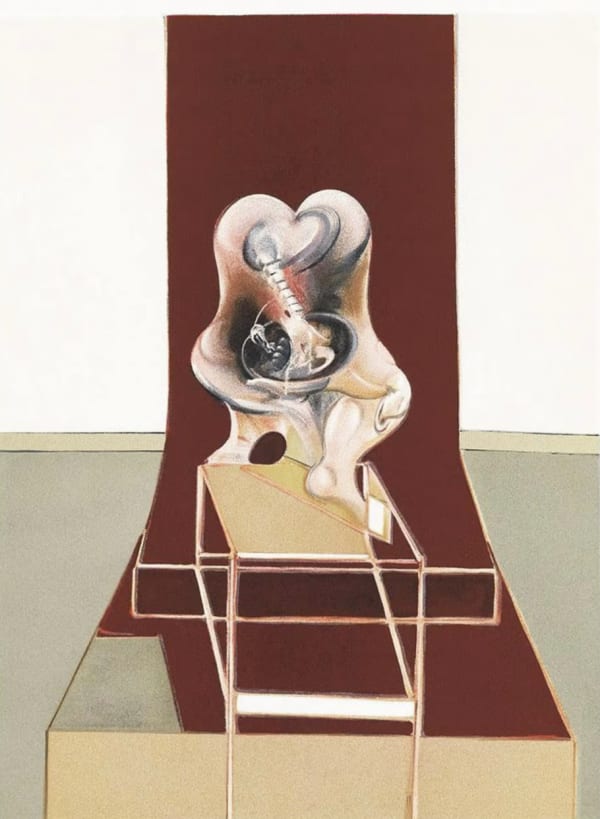-

L'Homme au Lavabo, 1978
Etching & aquatint in colours on arches paper.
67.5 x 52cm
©The Estate of Francis Bacon
-
“We are meat, we are potential carcasses. If I go into a butcher’s shop I always think it’s surprising that I am not hanging there too.”
– Francis Bacon
For Bacon, interiors were not backdrops but extensions of the psyche. The physical boundaries of these rooms mirrored his fascination with human limitation, the body, desire, and the inevitability of decay. Works like L’Homme au Lavabo capture that tension perfectly: a man alone, surrounded by silence, trapped within a space that offers no real escape.



